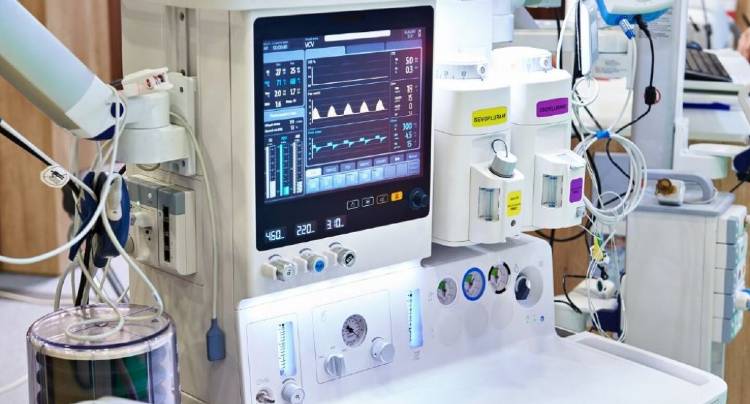
Ever wondered in your childhood days about anesthesia? How does it work? What devices are used while giving anesthesia? Is it safe or not? And tons of curious doubts in your creative brains.
As a friend of yours, it is my responsibility to make you aware of some amazing facts about anestheisa devices.
So, are you ready to burst your doubts with some fresh facts? Great, let’s go then.
You’ll be glad to know that anesthesia today is very safe overall. That said, there are some things you may not know about anesthesia that can allay any fears and even improve your outcome.
An anaesthesia device is an apparatus used to deliver general anaesthesia to patients as they undergo a medical procedure.
The most commonly used device is the continuous-flow anaesthetic device, which provides a steady flow of air containing a regulated supply of gas.
The modern anaesthesia machine is a complex operating room instrument that incorporates a ventilator to optimize the delivery of inhaled anaesthetics.
The anaesthesia device has gradually evolved from simply a means to anaesthetize and oxygenate a patient to an anaesthesia workstation incorporating increasingly complex ventilator modes, end-tidal CO2 monitors, end-tidal anaesthetic concentrations, minimal alveolar concentration estimators, and a means of monitoring vital signs.
Despite all these innovations and new instruments added to the anaesthesia devices, an understanding of the anaesthesia devices is still a core component of the practice of anaesthesiology.
I know, you will be curious to know about some unique functions about how anestheisa device works.
So here are four main functions of the modern anaesthesia machine:
After reading a few amazing facts about anesthesia devices, it is time for you to know about it’s important components.
So, without any waiting. Let’s go.
There are essentially two broad categories of anaesthesia machine vaporizers: variable bypass vaporizers and measured flow vaporizers.
Variable bypass vaporizers work by setting a "splitting ratio" on a dial controlling the vaporizer.
The splitting ratio describes the ratio of fresh gas flow that enters the vaporizing chamber compared to the fresh gas flow that bypasses the vapour chamber.
The gas that enters the vapour chamber becomes saturated with anaesthetic and then reunites with the fresh gas flow to deliver a carefully calculated dose of volatile anaesthetic.
The variable bypass vaporizer automatically compensates for a wide range of temperatures in the operating room to ensure a steady output of anaesthetic at a given atmospheric pressure.
As expired gases travel back to the anaesthesia machine from the patient, the APL Valve, otherwise known as the "pop-off valve," sits between the expiratory unidirectional valve and the carbon dioxide absorber.
The APL valve serves as a pressure relief valve to prevent excessive pressures in the breathing circuit when tubing may become obstructed.
Excessive pressures may result in barotrauma to the patient or damage to flowmeters or vaporizers.
As the name suggests, the APL valve can be adjusted during different phases of anaesthesia to best suit the patient. During spontaneous ventilation, the valve remains open to facilitate easier breathing.
The intermediate pressure system has a button referred to as the "oxygen flush" button, which, when pressed, allows for the opening of a direct connection between the pipeline oxygen and the oxygen pressure regulator to deliver 35 to 70 litres per minute of pure oxygen at a pressure of 45 to 60 psi to the patient.
Its most common use is during mask ventilation when an inadequate mask seal cannot be obtained due to various reasons such as a patient's beard, operator error, and patients with difficult airways.
An essential component of the circle system breathing circuit is the carbon dioxide absorbent. CO2 absorbent contains various mixtures of calcium hydroxide, sodium hydroxide, potassium hydroxide, and barium hydroxide to prevent the introduction of carbon dioxide into the inspiratory limb of the anaesthesia machine.
Expired gases pass through the filter where carbon dioxide undergoes chemical reactions with these respective bases to be trapped in the filter to allow for safer rebreathing of the expired air.
The filtered expired air allows for expired gases to be recycled, allowing for low-flow anaesthesia (gas flows less than alveolar ventilation to minimize the costs of providing anaesthesia).
CO2 absorbents used in anaesthesia devices typically have chemical indicators that change colour as the filter becomes saturated.
When the filter is two-thirds saturated, the filter should be changed to prevent the re-breathing of carbon dioxide.
Modern anaesthesia machine monitors will often indicate when carbon dioxide is detected in the inspiratory limb, further alerting the anesthesiologist that the soda lime filter needs to be exchanged.
Being a patient reader, you deserve to know about how gas flows through anestheisa devices.
Clinical Significance of Anaesthesia Devices:
The time has come to make your curious mind relax with some importance anestheisa devices.
The modern anaesthesia machine implementing a closed-circuit system allows for recycling inhaled gases (i.e., oxygen, nitrous oxide, isoflurane, sevoflurane, etc.), resulting in a significant reduction in environmental pollution.
Advances in carbon dioxide absorbents have allowed carbon dioxide to be absorbed and filtered out from exhaled gases so that oxygen and volatile anaesthetics can be re-used.
The effectiveness of recycling gases can be compounded by utilizing the practice of low-flow anaesthesia (gas flows less than alveolar ventilation).
Anaesthesia circuits without a closed-circuit system may be used to administer anaesthesia; however, at a significant financial cost to administer anaesthetic and significant environmental impact when implemented widely.
I recommend my patient readers which include entrepreneurs, investors, and others to invest in the business of anesthesia devices and see your business growing with no sky limit.
The Global Anesthesia Devices Market is estimated to rise at a market growth of 8.0% CAGR during the forecast period.